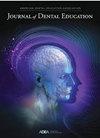Radiographic imaging interpretation is a central competency of the dental profession. Previous research has determined that radiographic interpretations vary across dentists. In addition, the efficacy of empirical learning within the realm of medical imaging analysis remains understudied. This project aimed to improve an existing anatomy curriculum as well as students’ radiographic interpretation skills via implementation of medical radiographic case studies with scaffolded exercises.
Three medical imaging activities were developed by the authors and presented in the anatomy laboratory for 60 first-year dental students. Each module included identical pre-activity and post-activity questionnaires, radiographic images with corresponding lesson plans, and open-response questions on the activity's valuable and challenging components. Pre-activity and post-activity questionnaire scores were compared via a Wilcoxon signed rank test. Kruskal–Wallis tests were conducted to determine the impact of previous anatomy experience and previous medical imaging experience on student performance. Thematic analysis was applied to open response comments.
A statistically significant improvement in questionnaire scores was observed in the first medical imaging activity. No significant change in scores was observed for the other two activities. Students valued the activities’ interactive structure, review of course material, and application to the dental profession. Students reported challenges in radiographic image interpretation and lack of previous knowledge on course concepts.
While medical imaging activities failed to consistently improve student-learning outcomes, they introduced skill development in radiographic analysis and increased student confidence. These findings suggest a need for additional research on experiential methodologies within medical imaging education.


